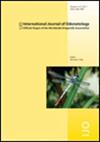通过基因组学揭示鸟纲鸟类有效种群数量随气候变化而发生的变化
IF 1
4区 农林科学
Q3 ENTOMOLOGY
引用次数: 0
摘要
第三代测序技术的出现推动了高质量、染色体水平的鸟类基因组组装的蓬勃发展,但迄今为止,这些技术尚未被广泛用于估算测序物种在不同时期的种群历史。然而,了解各品系对过去气候变化的反应有助于预测它们对当前和未来气候变化的反应。在这里,我们利用成对序列马尔可夫聚合(PSMC)估算了栉水母(Sympetrum striolatum)、栉水母(Ischnura elegans)和栉水母(Hetaerina americana)的人口历史。Ischnura elegans的有效种群数量在更新世冰期前后急剧下降,而S. striolatum和H. americana的有效种群数量则在最近出现下降。在过去的十万年中,这三个物种的种群数量都相对稳定。尽管在确定物种的保护状况时必须保持谨慎,但凝聚模型并未显示出任何需要对三个受测物种进行重大关注的理由。伊蚊的模型证实了之前的研究,即随着温度的升高,伊蚊的种群数量将会增加。本文章由计算机程序翻译,如有差异,请以英文原文为准。
Changes in effective population size of Odonata in response to climate change revealed through genomics
The advent of third generation sequencing technologies has led to a boom of high-quality, chromosome level genome assemblies of Odonata, but to date, these have not been widely used to estimate the demographic history of the sequenced species through time. Yet, an understanding of how lineages have responded to past changes in the climate is useful in predicting their response to current and future changes in the climate. Here, we utilized the pairwise sequential markovian coalescent (PSMC) to estimate the demographic histories of Sympetrum striolatum, Ischnura elegans, and Hetaerina americana, three Odonata for which chromosome-length genome assemblies are available. Ischnura elegans showed a sharp decline in effective population size around the onset of the Pleistocene ice ages, while both S. striolatum and H. americana showed more recent declines. All three species have had relatively stable population sizes over the last one hundred thousand years. Although it is important to remain cautious when determining the conservation status of species, the coalescent models did not show any reason for major concern in any of the three species tested. The model for I. elegans confirmed prior research suggesting that population sizes of I. elegans will increase as temperatures rise.
求助全文
通过发布文献求助,成功后即可免费获取论文全文。
去求助
来源期刊

International Journal of Odonatology
ENTOMOLOGY-
CiteScore
2.30
自引率
0.00%
发文量
15
审稿时长
>12 weeks
期刊介绍:
International Journal of Odonatology (IJO) is aimed at providing a publication outlet for the growing number of students of Odonata. It will address subjects such as the ecology, ethology, physiology, genetics, taxonomy, phylogeny and geographic distribution of species. Reviews will be by invitation, but authors who plan to write a review on a subject of interest to the journal are encouraged to contact the editor.
 求助内容:
求助内容: 应助结果提醒方式:
应助结果提醒方式:


